Abstract
Mechanical and thermal changes associated with a propagated nerve impulse were determined using the garfish olfactory nerve. Production of an action potential was found to be accompanied by swelling of the nerve fibers. The swelling starts nearly at the onset of the action potential and reaches its peak at the peak of the action potential. There is a decrease in the length of the fibers while an impulse travels along the fibers. The time-course of the initial heat was determined at room temperature using heat-sensors with a response-time of 2-3 ms. Positive heat production was found to start and reach its peak nearly simultaneously with the action potential. The rise in temperature of the nerve was shown to be 23 (+/- 4) mu degrees C. In the range between 10 degrees and 20 degrees C, the temperature coefficient of heat production is negative, primarily due to prolongation of the period of positive heat production at low temperatures. The amount of heat absorbed during the negative phase varies widely between 45 and 85% of the heat evolved during the positive phase. It is suggested that both mechanical and thermal changes in the nerve fibers are associated with the release and re-binding of Ca-ions in the nerve associated with action potential production.
Full text
PDF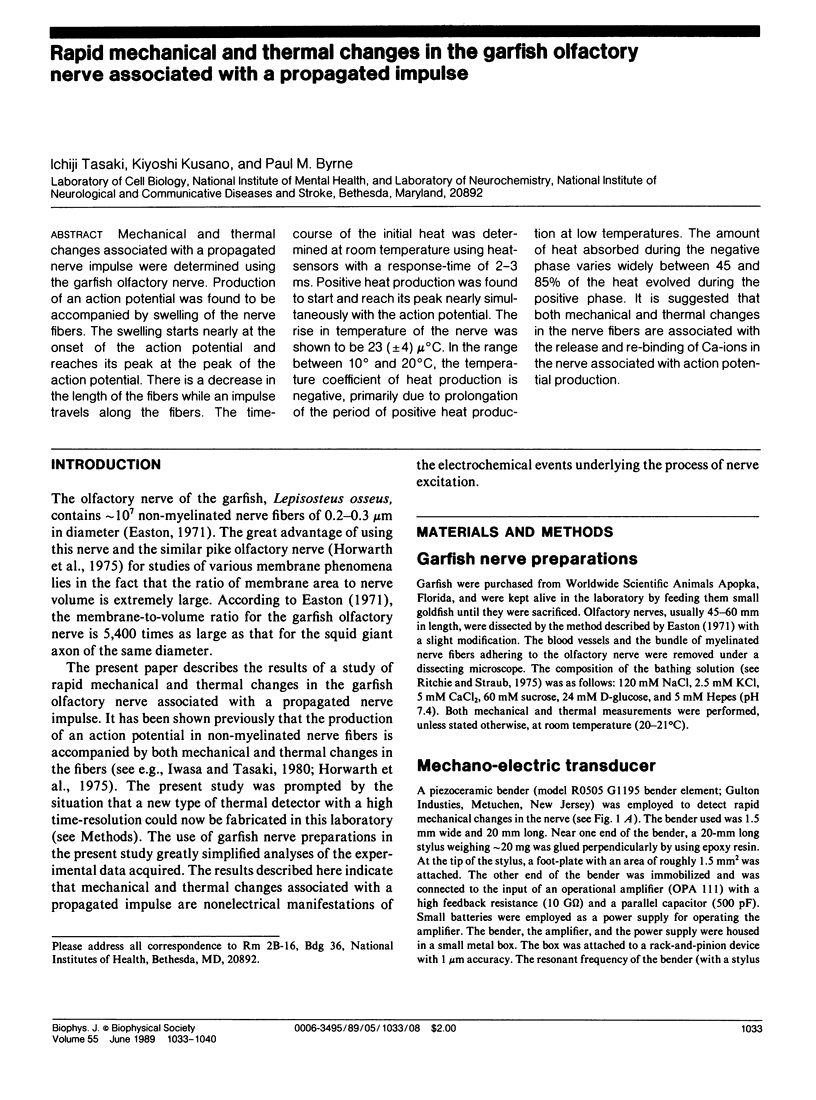
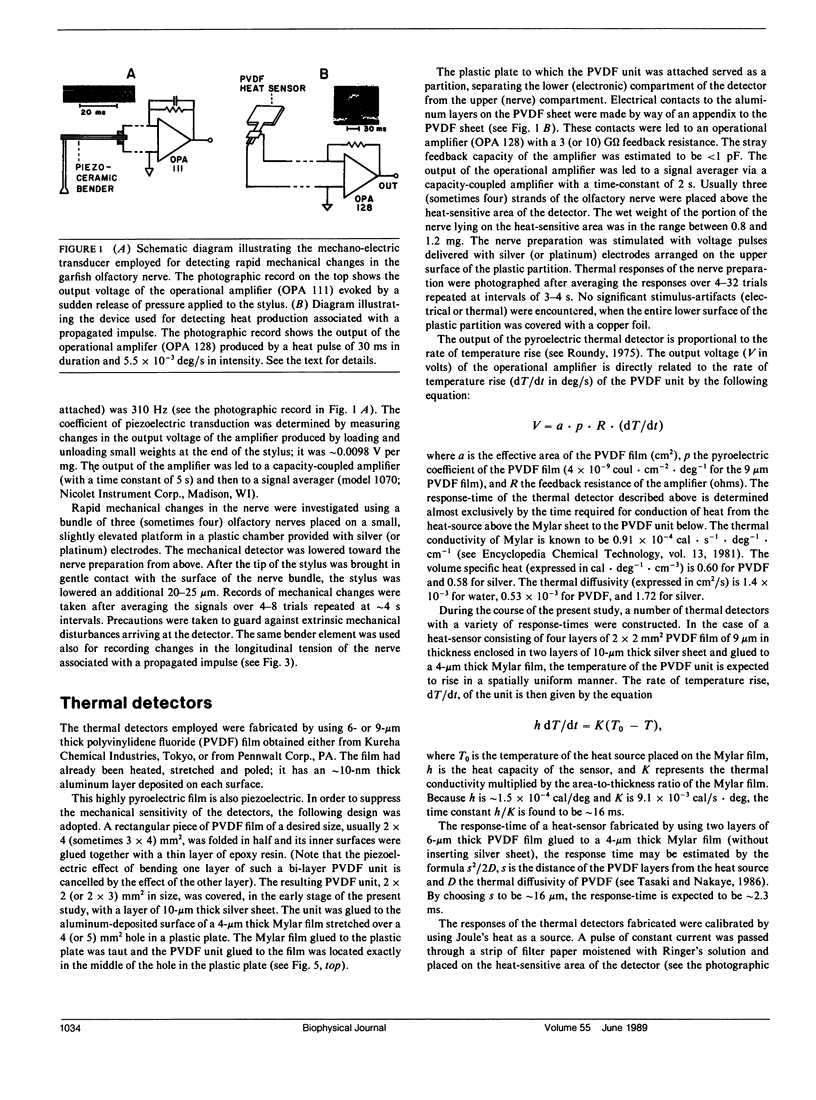
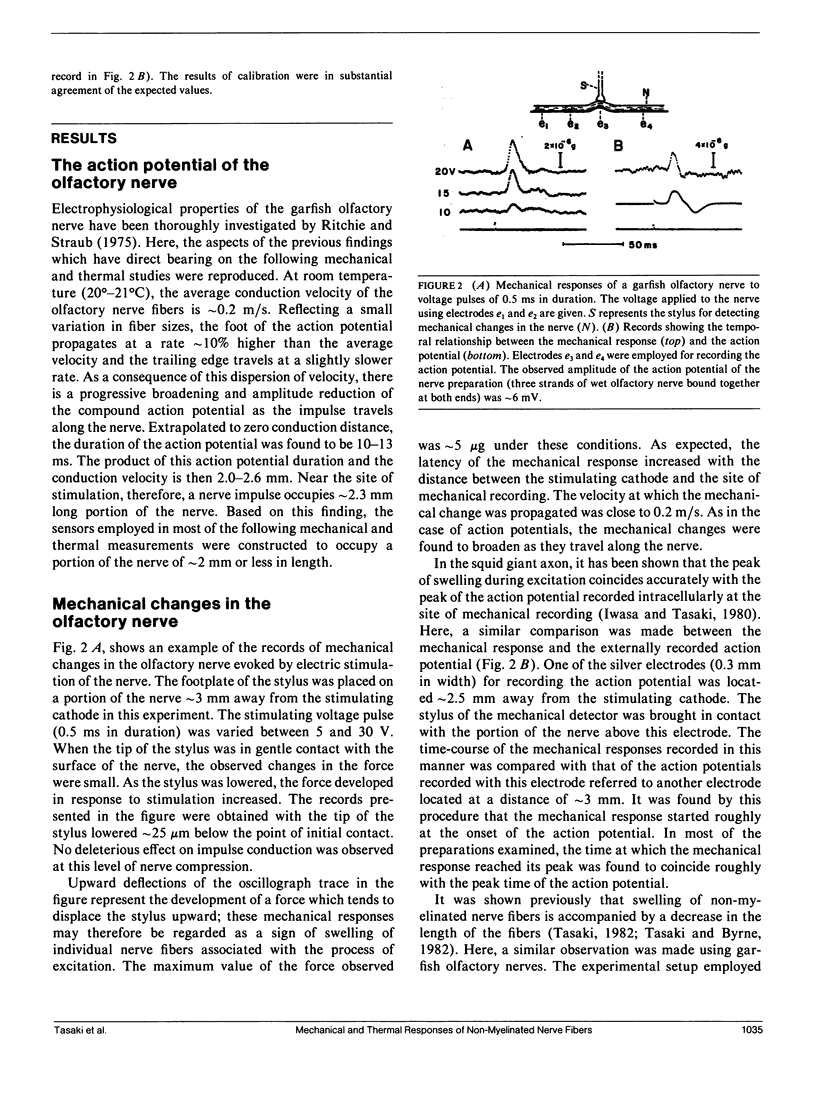
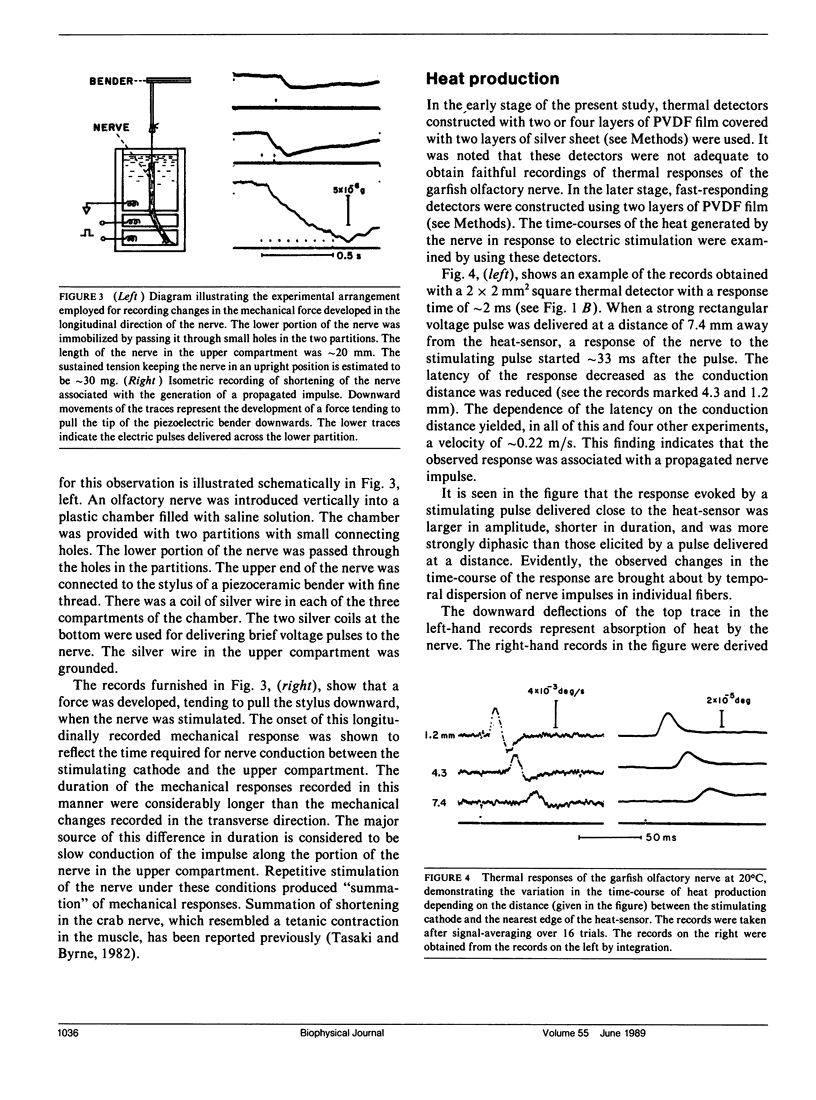
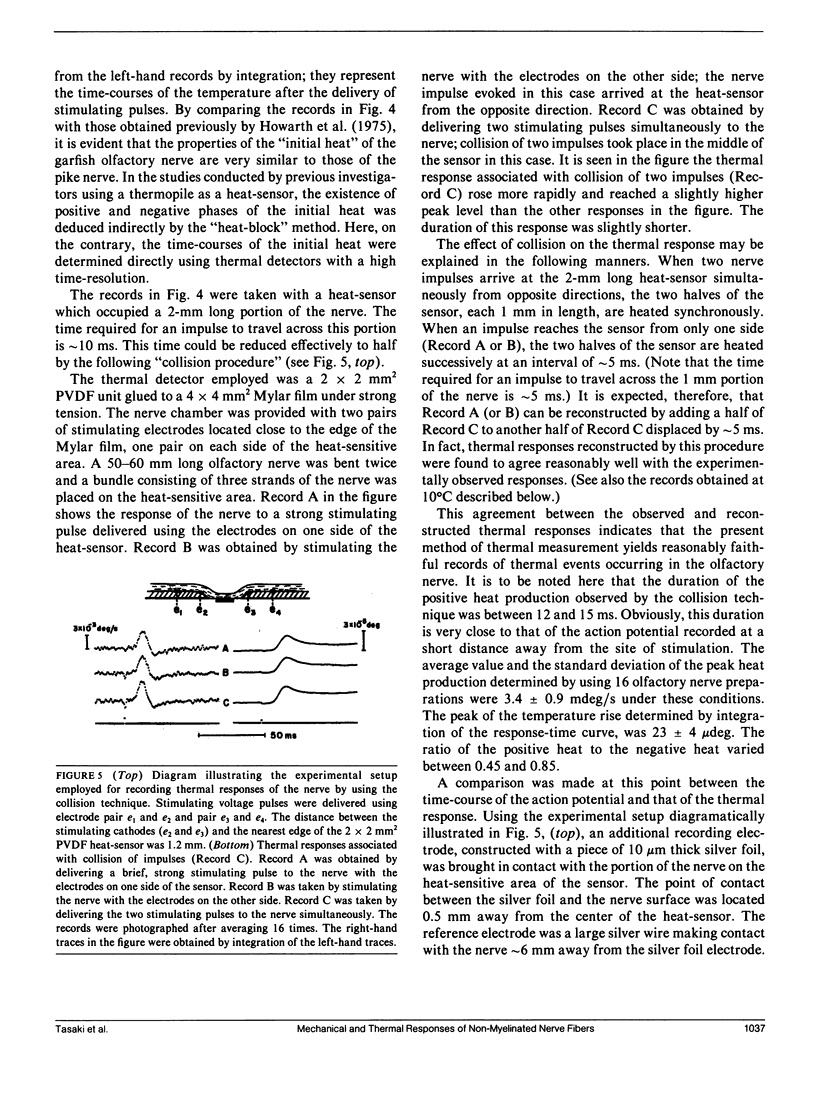
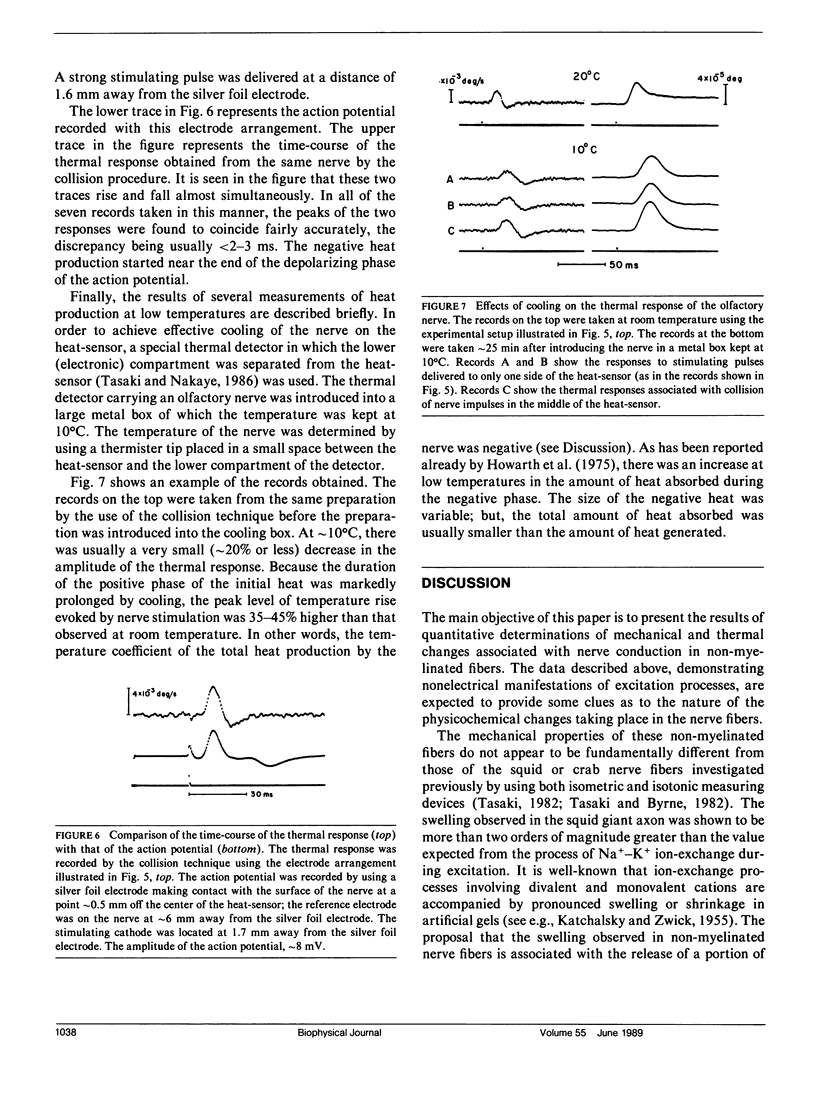
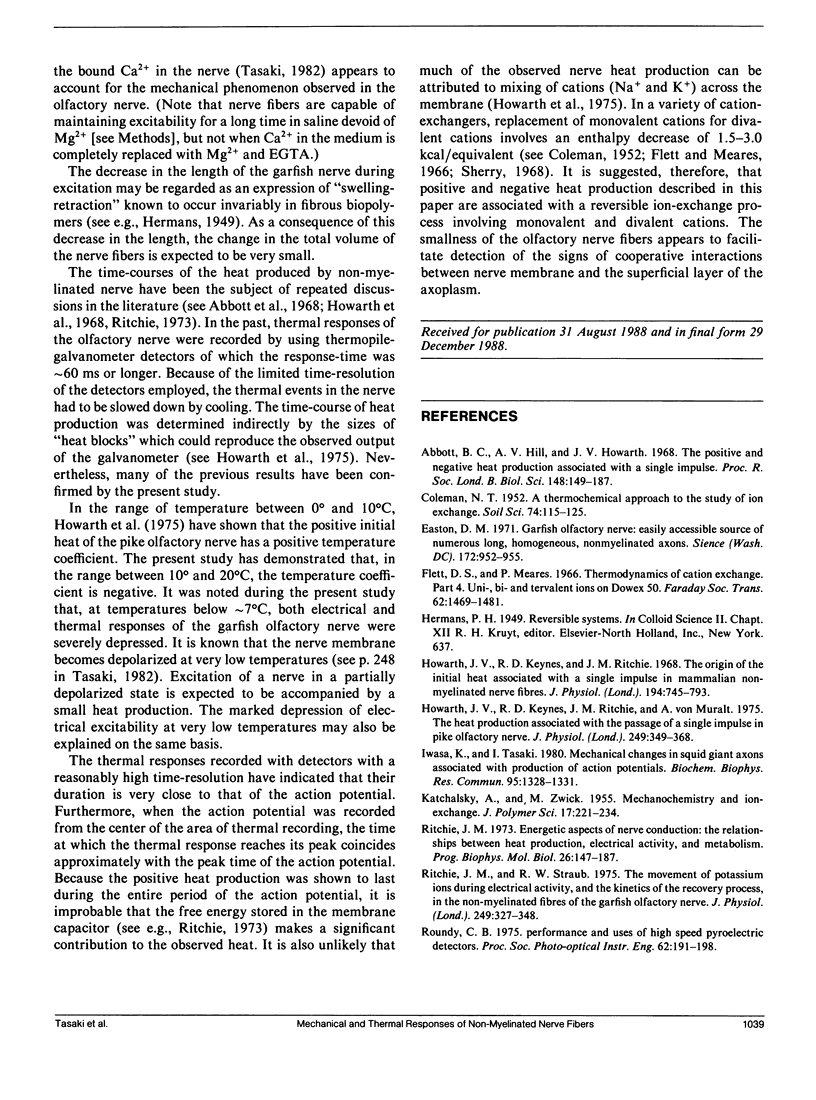
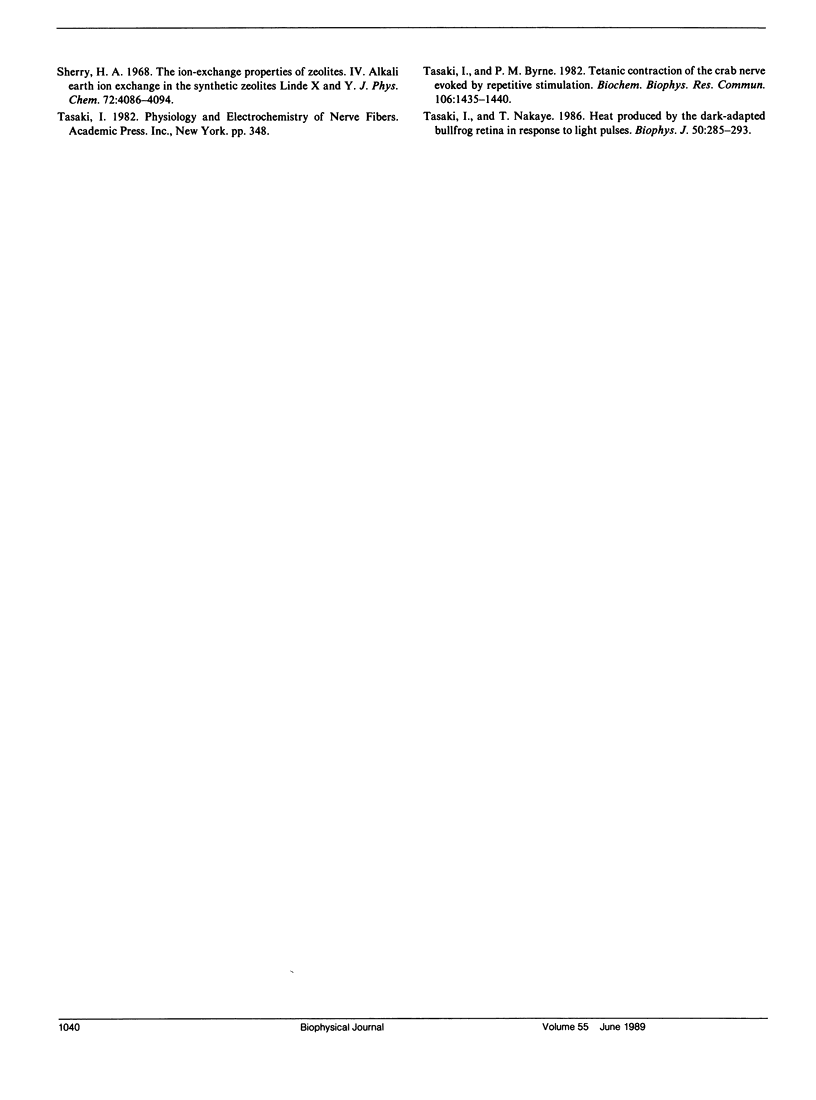
Selected References
These references are in PubMed. This may not be the complete list of references from this article.
- ABBOTT B. C., HILL A. V., HOWARTH J. V. The positive and negative heat production associated with a nerve impulse. Proc R Soc Lond B Biol Sci. 1958 Feb 18;148(931):149–187. doi: 10.1098/rspb.1958.0012. [DOI] [PubMed] [Google Scholar]
- Easton D. M. Garfish olfactory nerve: easily accessible source of numerous long, homogeneous, nonmyelinated axons. Science. 1971 May 28;172(3986):952–955. doi: 10.1126/science.172.3986.952. [DOI] [PubMed] [Google Scholar]
- Howarth J. V., Keynes R. D., Ritchie J. M. The origin of the initial heat associated with a single impulse in mammalian non-myelinated nerve fibres. J Physiol. 1968 Feb;194(3):745–793. doi: 10.1113/jphysiol.1968.sp008434. [DOI] [PMC free article] [PubMed] [Google Scholar]
- Howarth J. V., Keynes R. D., Ritchie J. M., von Muralt A. The heat production associated with the passage of a single impulse in pike olfactory nerve fibres. J Physiol. 1975 Jul;249(2):349–368. doi: 10.1113/jphysiol.1975.sp011019. [DOI] [PMC free article] [PubMed] [Google Scholar]
- Iwasa K., Tasaki I. Mechanical changes in squid giant axons associated with production of action potentials. Biochem Biophys Res Commun. 1980 Aug 14;95(3):1328–1331. doi: 10.1016/0006-291x(80)91619-8. [DOI] [PubMed] [Google Scholar]
- Ritchie J. M. Energetic aspects of nerve conduction: the relationships between heat production, electrical activity and metabolism. Prog Biophys Mol Biol. 1973;26:147–187. doi: 10.1016/0079-6107(73)90019-9. [DOI] [PubMed] [Google Scholar]
- Ritchie J. M., Straub R. W. The movement of potassium ions during electrical activity, and the kinetics of the recovery process, in the non-myelinated fibres of the garfish olfactory nerve. J Physiol. 1975 Jul;249(2):327–348. doi: 10.1113/jphysiol.1975.sp011018. [DOI] [PMC free article] [PubMed] [Google Scholar]
- Tasaki I., Byrne P. M. Tetanic contraction of the crab nerve evoked by repetitive stimulation. Biochem Biophys Res Commun. 1982 Jun 30;106(4):1435–1440. doi: 10.1016/0006-291x(82)91274-8. [DOI] [PubMed] [Google Scholar]
- Tasaki I., Nakaye T. Heat produced by the dark-adapted bullfrog retina in response to light pulses. Biophys J. 1986 Aug;50(2):285–293. doi: 10.1016/S0006-3495(86)83462-2. [DOI] [PMC free article] [PubMed] [Google Scholar]


